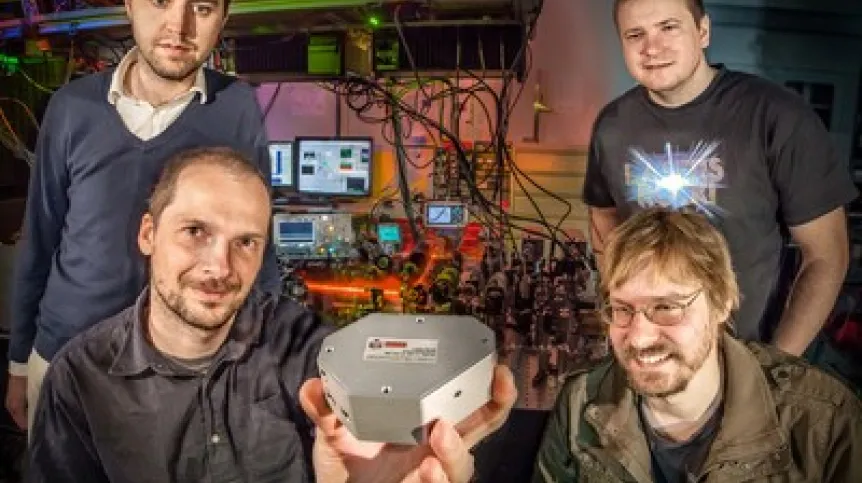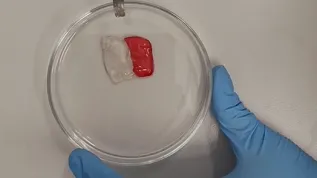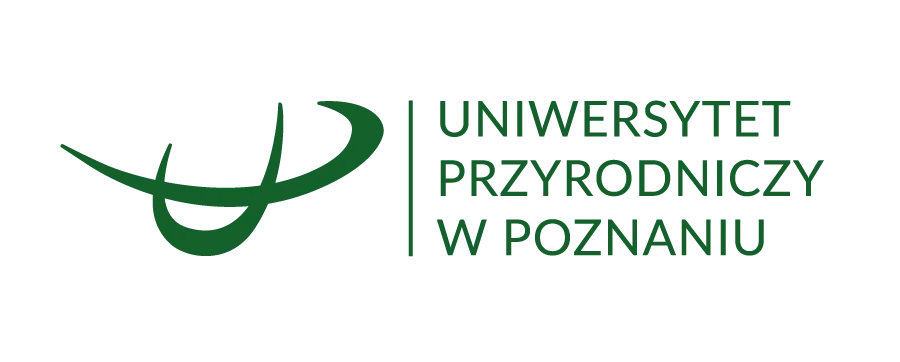
Researchers at the University of Warsaw significantly miniaturized lasers generating ultrashort light pulses. The achievement paves the way for the industrial production of reliable compact femtosecond lasers.
Lasting only billionths of a millionth of a second, incredibly short, femtosecond laser pulses have many uses in modern industry. Today\'s lasers capable of generating them, however, have a major drawback: they require relatively large, accurate and sensitive external optical systems used for diagnostics and processing of pulses. Optics experts from the Institute of Experimental Physics, Faculty of Physics, University of Warsaw managed to miniaturize some of these systems. Innovative instruments, built in the European MINIMODS project with a budget of 1.5 million euros, are cheap and easy to manufacture, even on a massive scale.
"We were not trying to re-invent the wheel, but carefully use available knowledge. As a result, we were able to reduce the size of the important optical instruments literally to millimetres. Such small devices, including diagnostic instruments, can now be permanently integrated with pulse lasers, which in future will be capable of self-adjustment" - explained project manager Dr. Piotr Wasylczyk of Photonic Nanostructures Laboratory of the Department of Optics, Institute of Experimental Physics UW.
Among optical devices modernized by physicists from the University of Warsaw in the project MINIMODS are autocorellator and tripler, which is a device that modifies the frequency of light.
Autocorellator is an important component of pulse lasers, because it monitors the duration of each pulse. Miniaturization of the device will allow to integrate it with the laser. Such improved laser, with self-diagnostic system, will be capable of monitoring the duration of its own pulses itself and automatically calibrate if deviations from the assumed values occur.
Interesting challenge was the miniaturization of tripler, the system that generates so-called higher harmonics. Systems of this type are used when the wavelength of light pulses needs to be shortened to the range, which can not be produced directly in the laser action. Examples are ultra-short pulses of ultraviolet light, particularly useful in materials processing. But lasers that directly generate ultraviolet light, simply do not exist.
Physicists from the IFD FUW were working on the instrument that would shorten the wavelength of laser pulses from approx. 1,000 nanometers to "ultraviolet" 370 nanometers.
To achieve that, the pulse from the laser had to pass through a suitable non-linear crystal that would shorten the wavelength by half - and therefore generate second harmonic in the green region of the spectrum. To form third harmonic, the two impulses - infrared and green - were then mixed in another crystal. The problem was that the basic impulse and the second harmonic impulse spread in other directions and at different speeds. Advanced computer simulations allowed to develop a set ("sandwich") of the three crystals, which when placed between the crystals that generate harmonics allowed to overlap of the two pulses in space and time. Finally, the set of five crystal plates was reduced to a 5 mm cube. Another benefit was a 50% increase in the efficiency of the device compared to similar devices currently used.
Apart from the Faculty of Physics, University of Warsaw, the scientific part of the MINIMODS project was represented by the Scottish Fraunhofer Center for Applied Photonics. They miniaturized two other previously external optical systems for femtosecond laser diagnostics: spectrometer and an instrument for measuring the quality of a laser beam.
The project MINIMODS (MINIaturised MODuleS) is part of the package "Research for Small and Medium-Sized Enterprises" of the 7th Framework Programme of the European Union, stimulating research institutions to carry out research on behalf of European Union companies. The industrial part in MINIMODS are four companies: Scottish M Squared Lasers (project coordinator), German LASEROPTIK, Swiss Time-Badwidth Products (now JDSU Ultrafast Lasers) and Spanish Radiantis Light. These companies are laser manufacturers. There is therefore a real chance that the solutions developed at FUW find applications.
PAP - Science and Scholarship in Poland
lt/ mrt/
tr. RL













